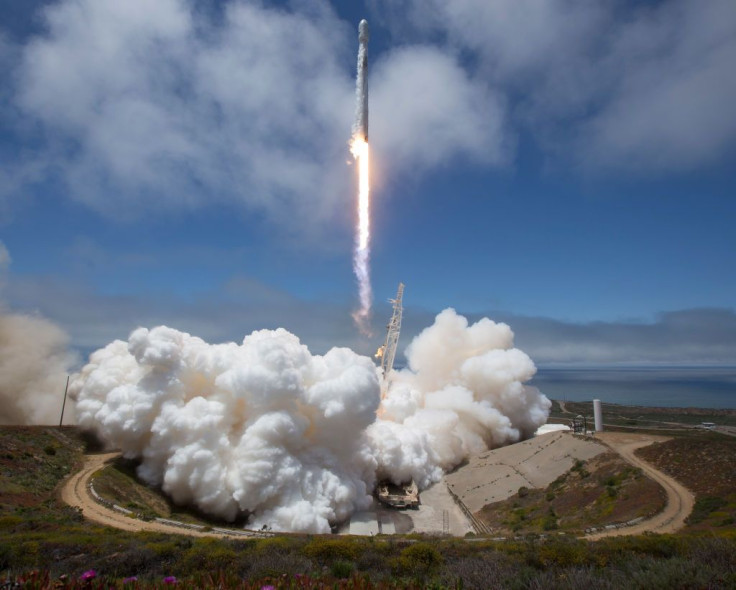Elon Musk Shares Uncut Footage Of SpaceX Falcon 9 Landing

SpaceX CEO Elon Musk shared an uncut video of the Falcon 9 rocket’s re-entry. The video shows how the rocket fell back to Earth and landed safely due to its booster.
The Falcon 9 rocket recently came from its CRS-18 mission, which is SpaceX’s 18th flight to the International Space Station (ISS). After releasing the payload section of the spacecraft, Falcon 9 fell back to Earth in a controlled manner.
On Twitter, Musk shared a video of the rocket’s re-entry. The video, which is a compilation of four different perspectives, begins with what appears to be a fireball as the rocket goes through the atmosphere.
Moments later, the fireball disappears and Falcon 9 becomes clearly visible. As it falls back to the surface, the rocket maintains an almost perpendicular orientation to the ground. Keeping this position is vital for the rocket in order to allow its booster B1056 to control Falcon 9’s descent.
Right before the booster is ignited, a loud booming sound can be heard. The rocket then continues with its controlled descent until it reaches the ground. Seconds before touching down, Falcon 9 deploys its stabilizers to assist with the landing.
Falcon rocket reentry from space with double sonic booms pic.twitter.com/6DDPjcOgQH
— Elon Musk (@elonmusk) July 28, 2019
Aside from the successful landing, Falcon 9 achieved another impressive feat during its CRS-18 mission by carrying almost 9,000 payloads to the ISS. These included various scientific experiments that weigh over a ton.
One of the payloads launched via Falcon 9 was the famous slime from the children’s television network Nickelodeon.
According to Ken Shields, the CEO of the ISS’ National Laboratory, the slime was brought onboard the station in order to study how the substance would react to space conditions.
“We’ve got a very unique partnership with Nickelodeon where we’re going to try to slime some stuff in space and see what happens, compare it to what happens on the ground,” Shields said according to CBS News.
“These are interesting sort of mechanical fluid physics demonstrations that we’re going to do,” he added. “We’re got some other great partners that we work with as well.”
Falcon 9’s next launch is expected to take place on Aug. 3. For the upcoming mission, the rocket will carry the AMOS-17 communication satellite from Israel.
© Copyright IBTimes 2024. All rights reserved.





















